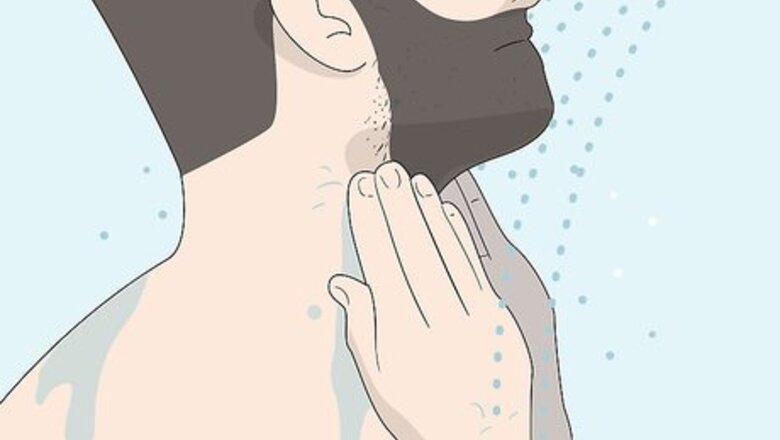
views
Shaving the Front of Your Neck
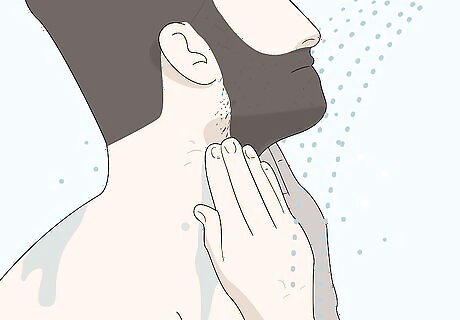
Take a shower or apply lubricating gel to your neck before you shave. Taking a warm shower or applying a warm, wet cloth to your neck for 5 minutes helps soften the pores in your skin and makes irritation less likely. A pre-shave oil or lubricating gel also helps to prevent irritation. You can buy lubricating gels anywhere that men’s hair products are sold. Be sure to apply your pre-shave oil or lubricating gel BEFORE you apply the shaving cream.
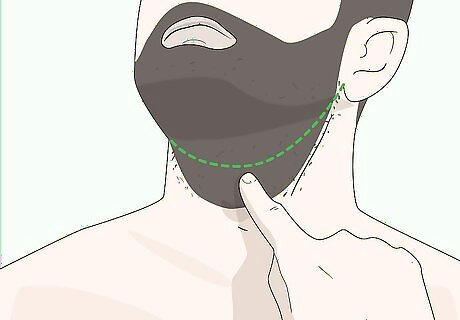
Define your neckline using your Adam’s apple. Tilt your head back slightly while looking in the mirror and place your finger just at the top of your Adam’s apple. Trace a line with your finger extending from this spot towards each of your ears. Use a trimmer to trim all the hair below this line, creating a border between the hair you intend to keep and the hair you intend to shave. Make sure you stay under the jawline at all times while creating your neckline with the trimmer. Aim for a slight upward curve when making your neckline.
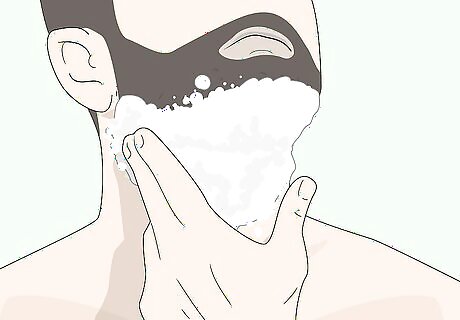
Apply shaving cream or gel to the hair on your neck. Whether you’re shaving with a cartridge razor or an electric shaver, use shaving cream to provide a layer of lubrication to your skin. This will significantly help prevent razor burn and give you a much more comfortable shave. If you have very dry or sensitive skin, use a shaving cream that is marked as “for sensitive skin” on the label.
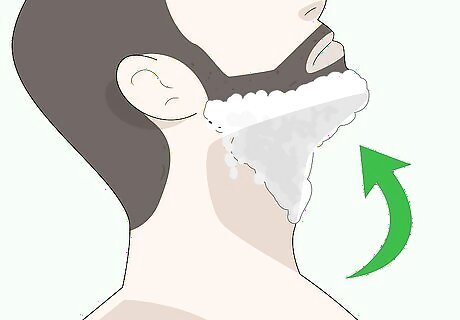
Tilt your head back to stretch the skin on your neck. This will force the hairs on your neck to stand upright, allowing you to get a closer shave with less burning and cutting. To make the skin on your neck even tauter, pull on your skin with your free hand while using your other hand to shave. Although you can pull your skin in either direction to make it taut, most people have more success pulling the skin on their neck downward rather than upward.
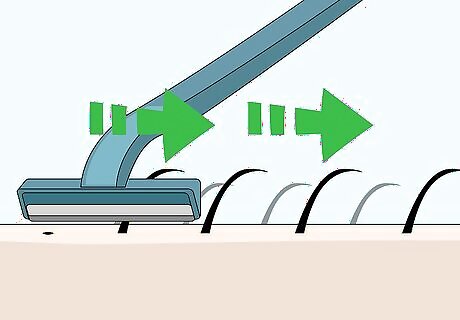
Shave with the grain to prevent razor bumps. Although this won’t give you as smooth a shave as shaving against the grain will, shaving with the grain will minimize the amount of irritation you experience afterwards. Be sure to change the direction in which you shave different areas of the neck to match the direction of hair growth in that area. For example, the hairs immediately below your chin may grow towards your torso, whereas the hairs below your ears may grow upwards towards your eyes.
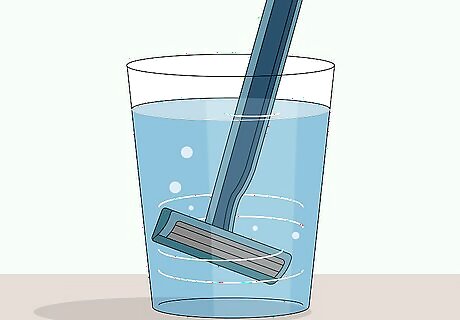
Dip or rinse your razor in warm water in between strokes. This will keep the blades clean and remove any hairs that have gotten stuck in between them. For best results, swirl your razor in a glass of warm water to most effectively remove hairs from between the blades. Adding soap to the water will also help to protect your razor blade from scratchy minerals that tend to dry and get stuck to the blade after every use.
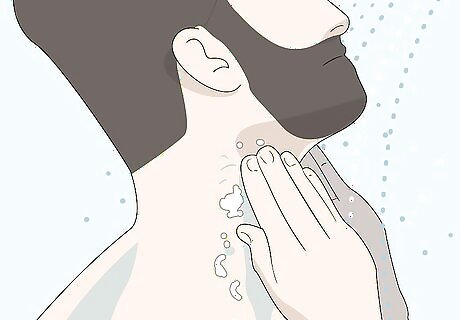
Rinse your neck after you finish to remove any remaining lather. Use cold water, if possible, since cold water will more effectively close your pores and reduce your chance of skin irritation. Rinsing your neck will also remove any remaining lather from your neck, which will help prevent ingrown hairs. For added protection, apply an aftershave gel or astringent to your face after you shave to prevent bacterial infection and soothe your skin.
Shaving the Back of Your Neck
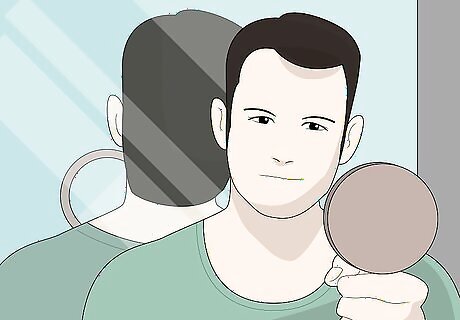
Stand with your back to a wall mirror and a hand mirror in front of you. Take your shirt off, if you haven’t already, and hold the hand mirror with your non-dominant hand (i.e., the hand that you don’t hold the razor with). Position the hand mirror so that you’re able to see the back of your neck reflected in the wall mirror. If possible, use a swing-arm mirror attached to the wall instead of a hand mirror, so that you’re able to keep both of your hands free instead of using one to hold the hand mirror.
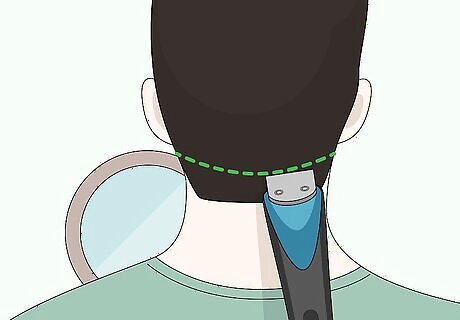
Shave a thin line across the back of your neck along your hairline. Position the trimmer so that the teeth are facing your neck with the blade side up and are parallel to the floor. Then, move the trimmer across the bottom of your natural hairline so that a thin straight line is produced. If you’re unsure where the bottom of your natural hairline is, you should be able to simply follow the outline left behind from your last haircut, provided it wasn’t too long ago. If you’re going for a more rounded look, make rounded corners at the edges of your hairline rather than straight corners.
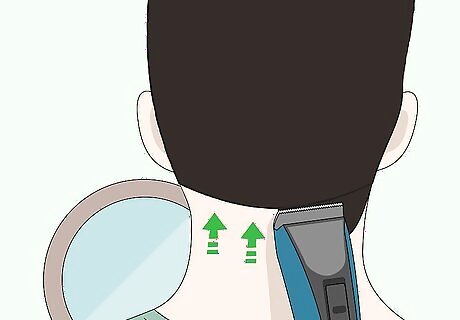
Shave upwards from the bottom of your neck to the line you just cut. Flip the trimmer so that the teeth of the blade are facing upward before you begin shaving the hair below the line. Be sure to avoid shaving above this line, as this will create an uneven haircut along the top of your neck. If you want a closer shave, you can also use a cartridge razor or safety razor to shave the hair below your hairline instead of an electric trimmer. Just make sure to use shaving cream before shaving and to shave with the grain rather than against it.
Preventing Razor Bumps and Irritation
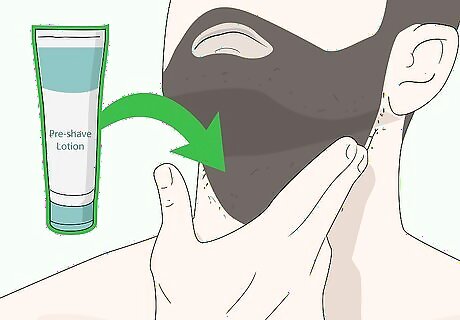
Apply a pre-shave lotion or powder to your face before shaving. Using a pre-shave lotion will give you a much more comfortable shave by making the hairs stand up, providing a layer of lubrication, and also absorbing the moisture from the skin. The extra layer of lubrication also helps to prevent razor burn.
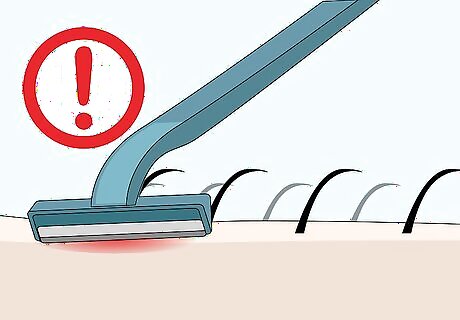
Use very little pressure on the blade to avoid irritating your skin. The more pressure you apply to the blade, the more irritation you’re going to wind up experiencing, so applying as little pressure as possible is ideal. This is especially important if the skin on your neck is particularly sensitive. If possible, use a “gentle” razor that exposes less of the razor blade to your skin than an ordinary razor. This will further minimize how irritated your skin will become after shaving.
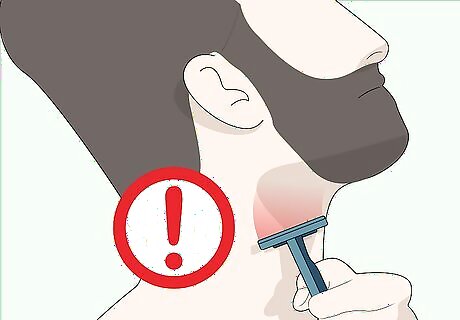
Refrain from shaving over the same spot more than once. The more times you shave an area of skin on your neck, the more likely it is to become irritated. If you’re having to shave the same spot more than once because the blade isn’t cutting the hair properly, this is an indication that you need to replace your razor. You should change your razor blade every 5-10 blades, unless the manufacturer’s instructions state otherwise.
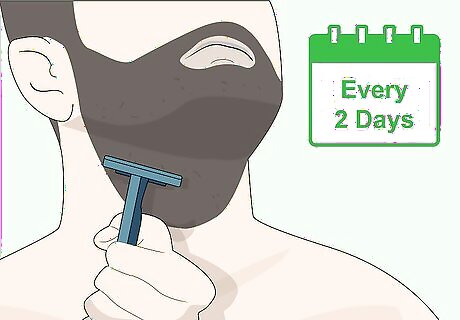
Shave your neck every 2 days instead of every day. If you let the hair on your neck grow out for too long, your electric razor will be more likely to snag on it and pull on it rather than shaving it. However, shaving every day will likely cause skin irritation along your neck, so shaving every 2 days is ideal. If you’re particularly susceptible to blemishes or ingrown hairs, you may want to shave every 3 days instead of 2, as your skin will probably need the extra time to heal. If your skin is sensitive, exfoliate your face when you wash it between shaves to get rid of some of the dead skin cells.




















Comments
0 comment